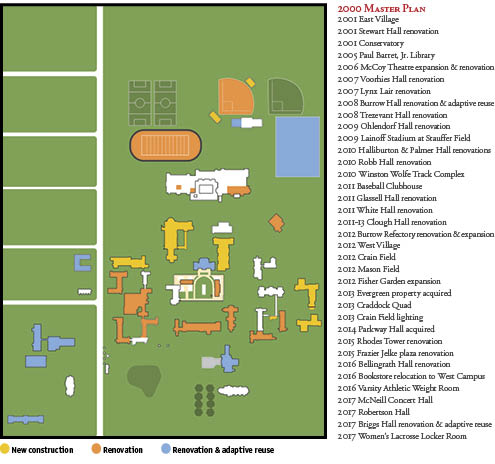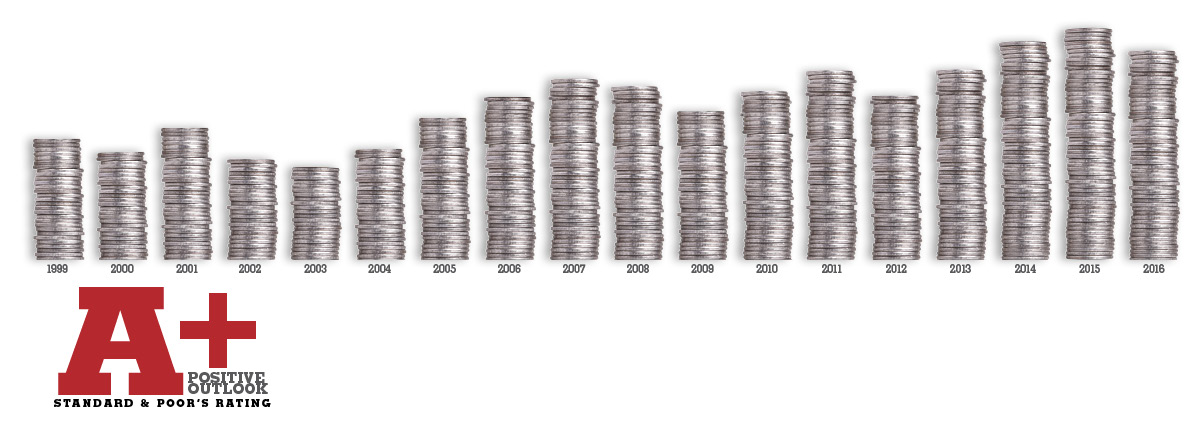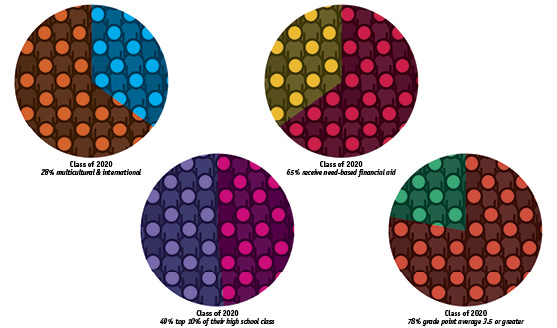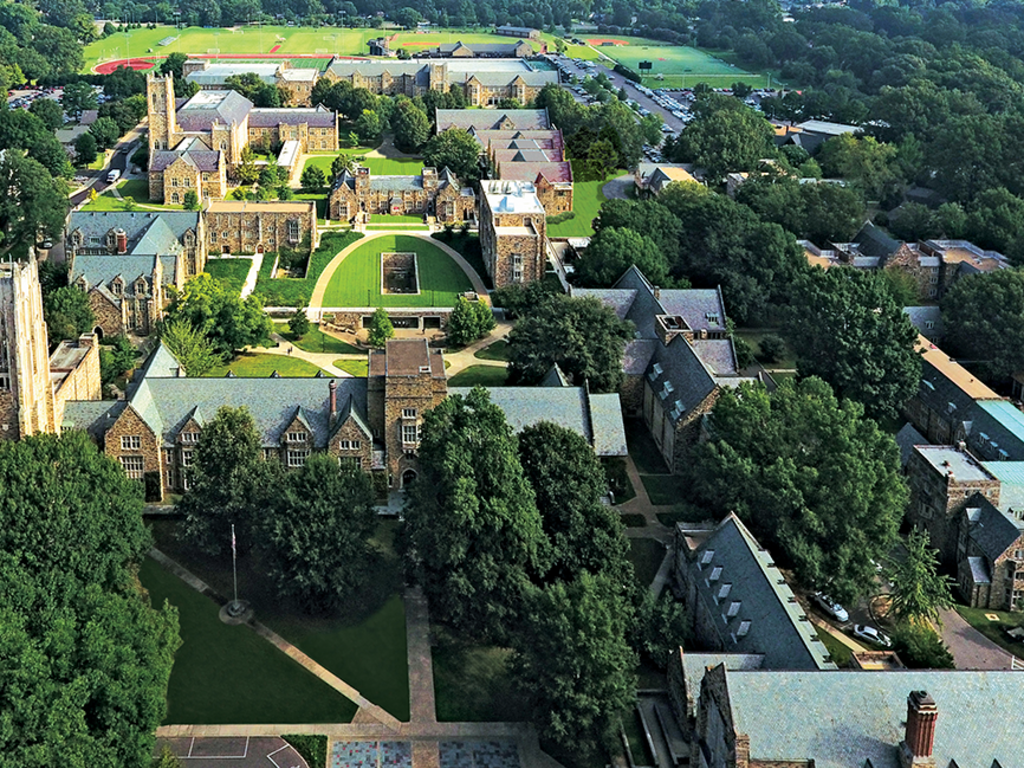Good leadership is not always easy to quantify, but a look around Rhodes 18 years after Dr. Troutt began his tenure shows the tangible hallmarks of a successful administration.
Master Planning Building on an Original Vision for a Collegiate Gothic Village
 Under the 18-year leadership of Dr. William E. “Bill” Troutt, the physical footprint of Rhodes College grew purposefully, combining the college’s signature beauty with a new functionality. During his early tenure listening tour, Troutt heard the requests for up-to-date facilities for traditional learning and modern technologies, with a new library at the top of the list. In 2001, thanks to $35 million from the Paul Barret Jr. Trust, Troutt announced plans for a state-of-the-art library—the planning of which remains one of his favorite memories of his time at Rhodes.
Under the 18-year leadership of Dr. William E. “Bill” Troutt, the physical footprint of Rhodes College grew purposefully, combining the college’s signature beauty with a new functionality. During his early tenure listening tour, Troutt heard the requests for up-to-date facilities for traditional learning and modern technologies, with a new library at the top of the list. In 2001, thanks to $35 million from the Paul Barret Jr. Trust, Troutt announced plans for a state-of-the-art library—the planning of which remains one of his favorite memories of his time at Rhodes.
“The library’s location was conceived to be in the heart of the campus—the cathedral of our village,” he says.
Troutt enjoyed watching the architects translate the goals for the building into reality, a beautiful space that works well down to the last detail, from the study rooms suggested by students to the nooks and crannies that suited the Rhodes aesthetic.
“It has been a special joy to me to participate in the master planning of our campus and to partner with the campus community to create so many special places,” Troutt says.
Good Stewardship: Eighteen Years of Financial Stability
One of the most important markers of a successful administration is fiscal security. With Troutt at the helm, Rhodes remained financially stable, even during the years that included a national economic downturn. With strong financial footing and excellent budget discipline, the college’s bond rating has gone up three times in the past few years—a tribute to the stewardship of the college staff and the incredible philanthropy of college supporters, says Troutt.
“During the 2008-09 travail, we separated ourselves from a lot of other liberal arts colleges by standing sturdy financially,” he says. “We’ve been careful and we’ve been collaborative. Both have worked together for the good of Rhodes.”
Prime Numbers: A Look at Student Body Growth and Increased Diversity
The first imperative of the Rhodes Vision concerns attracting, retaining, and challenging a diverse student body, and one of the fruits of the Troutt leadership model is controlled growth and increased diversity on campus. When working to move the Student Access Imperative from a vision to a reality, the trustees and president asked two questions: how do we make Rhodes more reflective of our country economically, racially, and geographically, and how do we make Rhodes as affordable as  possible? To that end they worked hard on increasing financial aid and on recruiting initiatives. The class of 2020, currently in its first year, boasts the most diverse student population ever. Multicultural and international students make up 28 percent of the student body.
possible? To that end they worked hard on increasing financial aid and on recruiting initiatives. The class of 2020, currently in its first year, boasts the most diverse student population ever. Multicultural and international students make up 28 percent of the student body.
Rhodes Vision and Strategic Imperatives Give a Clear View for Achieving Goals
Between his appointment as president in July 1999 and his inauguration, Troutt’s major goal was to listen: to staff and faculty, to alumni, to trustees, and to the students. And on a sunny morning in April 2000, he gave an inspiring inaugural address  that outlined the conclusions and goals he determined from his listening tour. The following year, 10 planning initiative committees were formed to make recommendations on how to achieve the “Ten Steps Forward to Advance Rhodes” that Troutt proposed. From those committees came the remarkable Rhodes Vision and Strategic Imperatives that have guided and defined the college ever since.
that outlined the conclusions and goals he determined from his listening tour. The following year, 10 planning initiative committees were formed to make recommendations on how to achieve the “Ten Steps Forward to Advance Rhodes” that Troutt proposed. From those committees came the remarkable Rhodes Vision and Strategic Imperatives that have guided and defined the college ever since.
“The Vision and its imperatives are connected to our saga and our story,” Troutt says. “It speaks to our history and honors those that have gone before. But it also emerges out of the voices of today and provides a directional statement for the future.”
The Rhodes Vision is the key to expanding and strengthening ties between the college and the city of Memphis, a partnership that has greatly benefited students. It promotes student access and encourages integrity and high achievement. It supports faculty and staff and insists on challenge and inspiration for everyone across the campus.
“The Vision is our touchstone, a tangible expression of all we hold dear,” says Troutt. “We go back to it continually for the discussions and decisions that benefit Rhodes.”
— Gaye Swan
